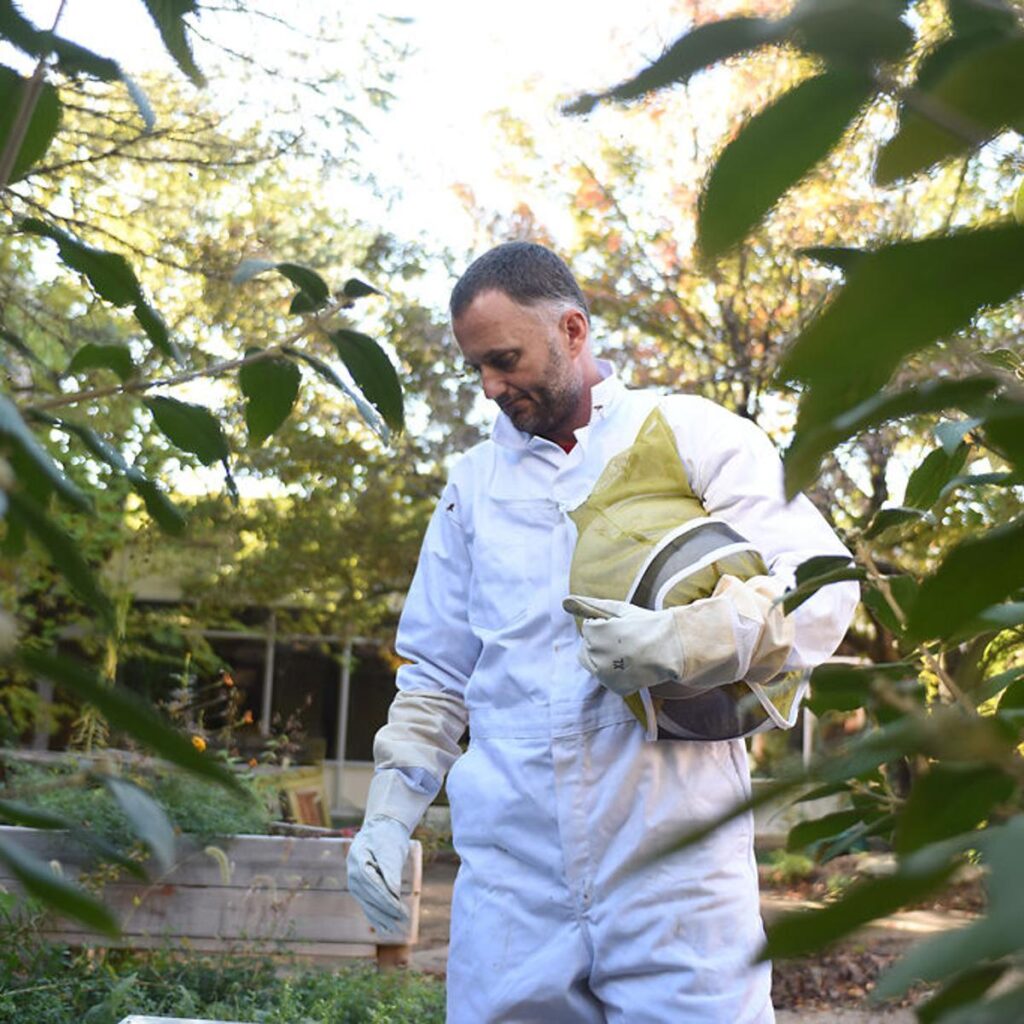Like so many educators, Brian Earls of Fairview Elementary School had to reimagine his craft in the pandemic’s wake. If this had been a typical school year, Brian would have taught science to all of the 5th-graders at Fairview and reading to his homeroom class. Of course, this year was anything but typical.
As Brian transitioned to online teaching, his virtual classroom expanded to include 5th-grade students from additional public schools in the Columbia, Missouri area. The school district had purchased a curriculum designated for families opting for yearlong virtual learning, and Brian was looking forward to having this supportive structure in place. Things didn’t quite pan out, however. In practice, Brian found the curriculum to be quite boring and he discovered that the majority of his colleagues felt the same way. The district responded by giving everyone freedom to return to their traditional curriculum. For Brian, this meant incorporating a place-based approach.
Brian was first introduced to the concepts of place-based education (PBE) through his work with Mike Szydlowski, the K-12 Science Coordinator for the Columbia Public School District. Brian immediately saw a connection between these ideas and the ways in which he was already incorporating the park spaces around the school in his teaching. He enthusiastically moved forward with integrating PBE concepts into the curriculum. For instance, in an effort to support local pollinators, Mike received a grant from the Honey Bee Conservancy to set up a beehive at Fairview Elementary. Brian oversaw the health of the hive and began to teach his 5th-graders about the life cycle of the bee and other insects.
Once Brian began to experiment with bringing place-based learning online, it didn’t take long to see results. In his words, “The kids were immediately more engaged with the switch and it really just felt better.” The momentum continued to build. For science class, students began observing events in the night sky from their homes. The conjunction of Saturn and Jupiter, Moon phases, and even the SpaceX Crew 1 launch entered the curriculum. In social studies, they started investigating the role of resources in determining why people and towns end up where they do. It turned out that the students knew very little about the value of the Missouri River, which led to an investigation of their local watershed.
And then there’s the story of Henry’s weekly owl reports. Brian had discovered that trying any kind of project where everyone does the same thing was quite difficult. He started encouraging kids to get out and explore their immediate surroundings while they were stuck at home and see if they might find inspiration in their own backyard. Henry Glaude is a fifth-grader at Russell Elementary School whose dad makes owl boxes as a hobby. A nesting pair of barred owls had used the box installed in their yard the previous three years and Henry’s dad had put a camera inside. Though Henry struggles with speech and expressing himself verbally, his family helped him produce a video project compiling owl updates to share with his class. The first edition featured camera footage from inside the box when a female barred owl flew in to examine the nesting site. “Will the female lay her eggs soon?” Henry asks on camera. “Tune in next week.” His classmates were hooked and instantly wanted to talk to him about owls, which in turn got Henry excited about continuing the project.
Brian used the owl report to start generating work from other students to incorporate into a larger project. A couple of “field reporters” joined Henry. Several students contributed owl-themed artwork. One student composed a song that she played on the piano. Another put together a high-quality “Owls of Harry Potter” video presentation. Brian went on to arrange virtual guest speakers from the Raptor Rehab Project at the University of Missouri and Missouri Department of Conservation (MDC). They are even taking a virtual Raptor Basics class with MDC to further the interests that the owl project sparked.
Brian concluded, “The most important thing is to keep kids paying attention to their surroundings. It is a great feeling to get submissions at night in the application we are using for school about things kids and families encounter while they are out and about around their homes. I feel like they have been more connected to what we are studying since they are using their surroundings.” What a remarkable success to be able to say that this year! Hats off to Brian Earls and Mike Szydlowski of the CPS District.


